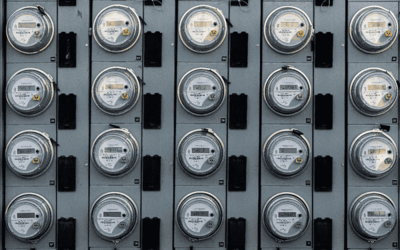We use cookies on our website.
Some of them are necessary for the functioning of the site, but you can decide about others.

What is demand flexibility?
How do demand flexibility technologies work?
Benefits to Consumers
Demand Flexibility’s Hurdles
The Time is Now
Traditionally speaking, homeowners have had a few different options to satisfy their energy usage: purchase it from a utility company, generate it themselves, or get rid of unnecessary loads either manually or automatically with a smart panel.
Today, homeowners have even more modern options to help curb their energy usage during peak demand periods. Contemporary examples of how homeowners and utilities alike are working toward a decarbonized future include distributed energy resources (DER), like solar and storage installations, demand response, and virtual power plants.
But like most new things in life, with improved strategies come new challenges. While it was once difficult to afford renewable energy solutions like solar PV, it's now a matter of how - and when - to best utilize the electricity from clean energy sources like solar and wind across the grid. That's where demand flexibility (DF) comes in.
Like its name states, demand flexibility is the ability to adapt and shift energy consumption when use is high to reduce strain on the grid. Unlike demand response where customers allow their utility company to shut loads off during peak demand hours, demand flexibility lessens an appliance's energy consumption and shifts it to a.) an emissions-free energy source, or b.) to another time of day when demand for electricity is down. The key with demand flexibility is that consumers won’t be able to tell when these shifts are taking place, so the end-user experience does not get affected.
For example, a utility could schedule an electric vehicle to charge at night when demand for energy is low. When the owner wakes up to leave for work, the car is fully charged and ready to roll.
First it's necessary to understand the current method for delivering energy to homes. As it works today, electricity generation is a one-way street. Utilities fire up power plants whenever customers need electricity. For the end user, there's typically little to no consideration of what time of day they're using their dishwasher or how high electric charges might be. As we move towards an electrified and more sustainable future - like transitioning from gas-powered vehicles to EVs - we need to implement a much more effective approach of electricity supply and demand as needs for electricity are expected to grow exponentially by the year 2050. This is where demand flexibility comes in.
Things like electric vehicle chargers, water heaters and thermostats can all be controlled remotely by utilities to adjust them based on consumer demand. Making these appliances and electric fixtures "flexible" gives utilities the freedom to regulate their energy consumption by shifting the time of day they're pulling electricity to periods when demand is low.
By definition, demand flexibility quite literally means a home's energy consumption is flexible. With this greater adaptability comes greater cost savings for consumers because appliances in a home would pull low-cost available energy, either from the grid or from renewable resources, resulting in a lower electricity bill.
Since demand flexibility allows utilities to reduce grid tension, this opens up electricity availability across the grid during peak demand. This malleability reduces the need to build additional infrastructure to meet energy demands, and less infrastructure means less cost to the consumer.
If the U.S. wants to meet its decarbonization goals by 2050, current efforts need to implement a more well-rounded, widespread approach. Demand flexibility is a cost-effective solution to increase clean energy usage amongst homeowners and avoid accrued costs from building more electricity distribution facilities. At the residential level alone, the Rocky Mountain Institute explains that demand flexibility initiatives can result in energy bill savings of up to 40%. In order to reap the benefits DF offers for our electrical grid, utilities, policymakers and manufacturers need to work together.
The National Resources Defense Council sums up four hurdles and their solutions so we can move toward a future where demand flexibility is the norm:
As states work toward their goal of net-zero greenhouse gas emissions by 2050, the electrification of all things will increase reliance on the grid like never before. In order to combat this, we need to adopt widespread and practical solutions. Demand flexibility offers an advantageous opportunity for utility companies to shift power usage of appliances and devices to periods when demand is low and renewable energy production is high. This will effectively alleviate stress on the grid, lower homeowners' energy bills and decarbonize the environment. It's critical to enforce DF solutions now so we can protect our energy infrastructure as we electrify our future one clean energy advancement at a time.